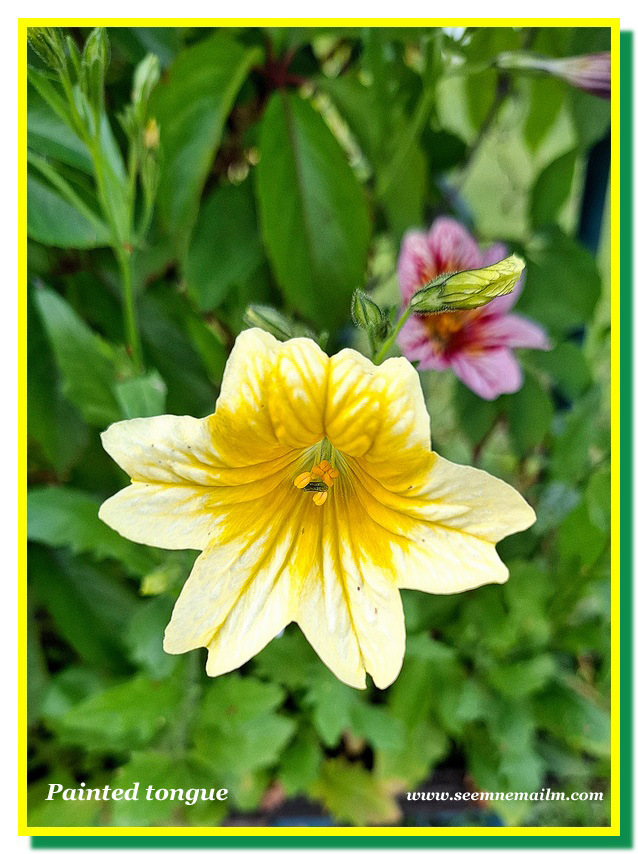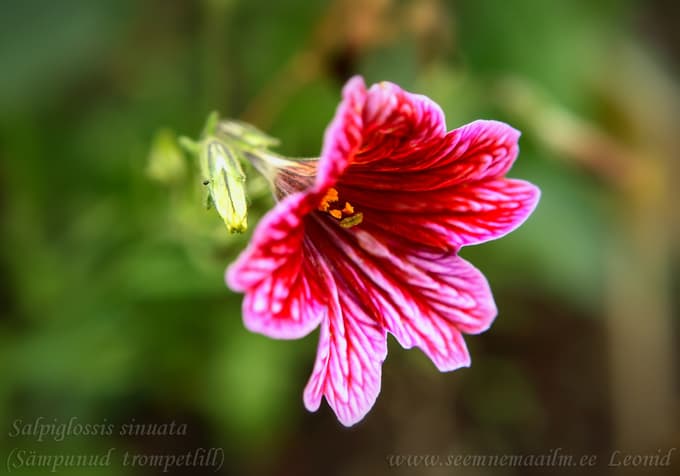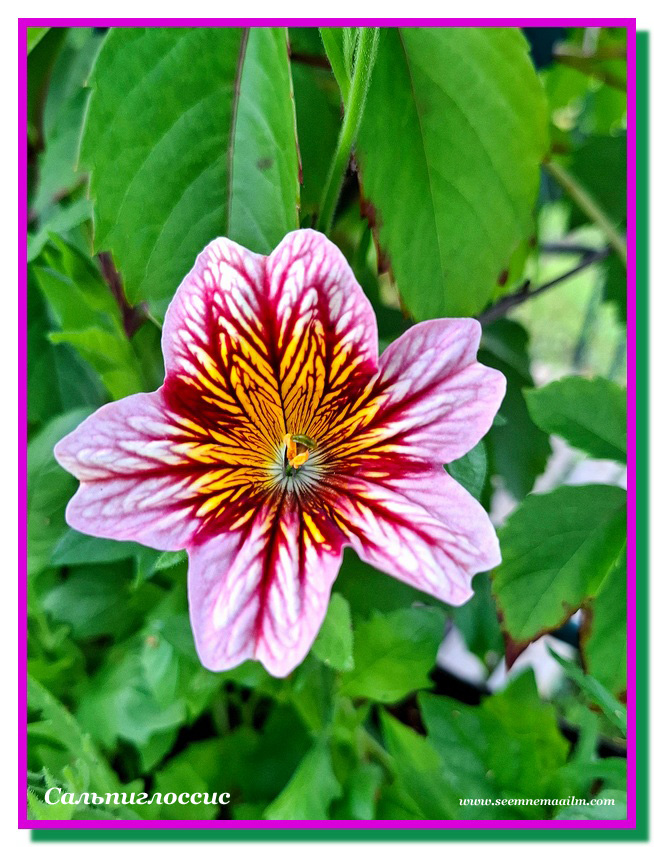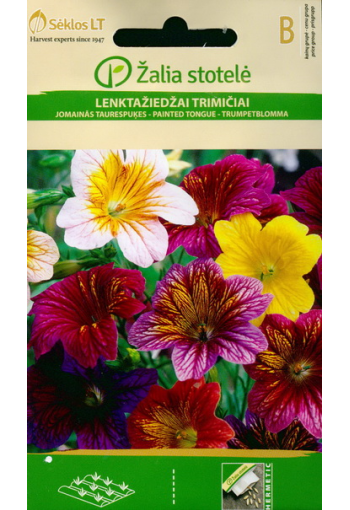A sea of flowers in the flowerbed and in the bouquet!
One of the most exotic annuals. Plants branched, bloom profusely and for a long time.
Flowers of bright colors with original contrasting veins are good both in a bouquet and in landscape design.
For better tillering, pinch the tops of young plants.



Name: comes from the Greek words "salpinx" - pipe and "glossa" - language, which is explained by the shape of the flower.
Description: the genus includes about 18 species distributed in South America (mainly in Chile).
The flowers are large, funnel-shaped, of various colors, with very effective combinations of colors and shades. In 1 g 4000-6000 seeds.
Blooms from June to October. Fruiting. The fruit is a two-celled, oval capsule with small seeds that remain viable for 4-5 years. In culture since 1820.
Location: thrives best in a sunny location protected from the wind. Does not tolerate excessive waterlogging, drought and frost.
Soil: Requires areas with deep, fertile, permeable soil.
Care: during the summer they feed several times and keep the earth moist.
Reproduction: seeds, which are sown more often in open ground in spring or autumn. Seedlings are thinned at a distance of 20-30 cm.
For seedlings, seeds are sown superficially in March, pressed to the soil, covered with glass and shaded with thick paper.
Seedlings appear after 2-3 weeks, during which the crops are kept at +15+20°C. Seedlings dive once in rows every 5 cm.
They are planted in the ground in early June, when the threat of return frosts has passed, at a distance of 25-30 cm. The transplant is poorly tolerated.
Usage: in group plantings, discounts.
Salpiglossis is not recommended to be planted far from the viewing point, otherwise the variegated colors merge into a blurry spot.
It is better to plant it in a small group near the path. Cut flowers stand in water for a long time.

Eng.: Painted tongue, paisley flower, velvet trumpet flower. Suom.: Torvikukka. Sven.: Trumpetblomma.











